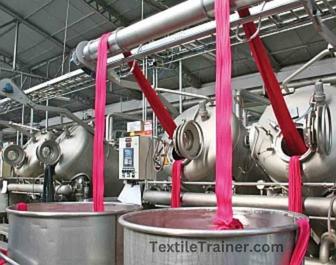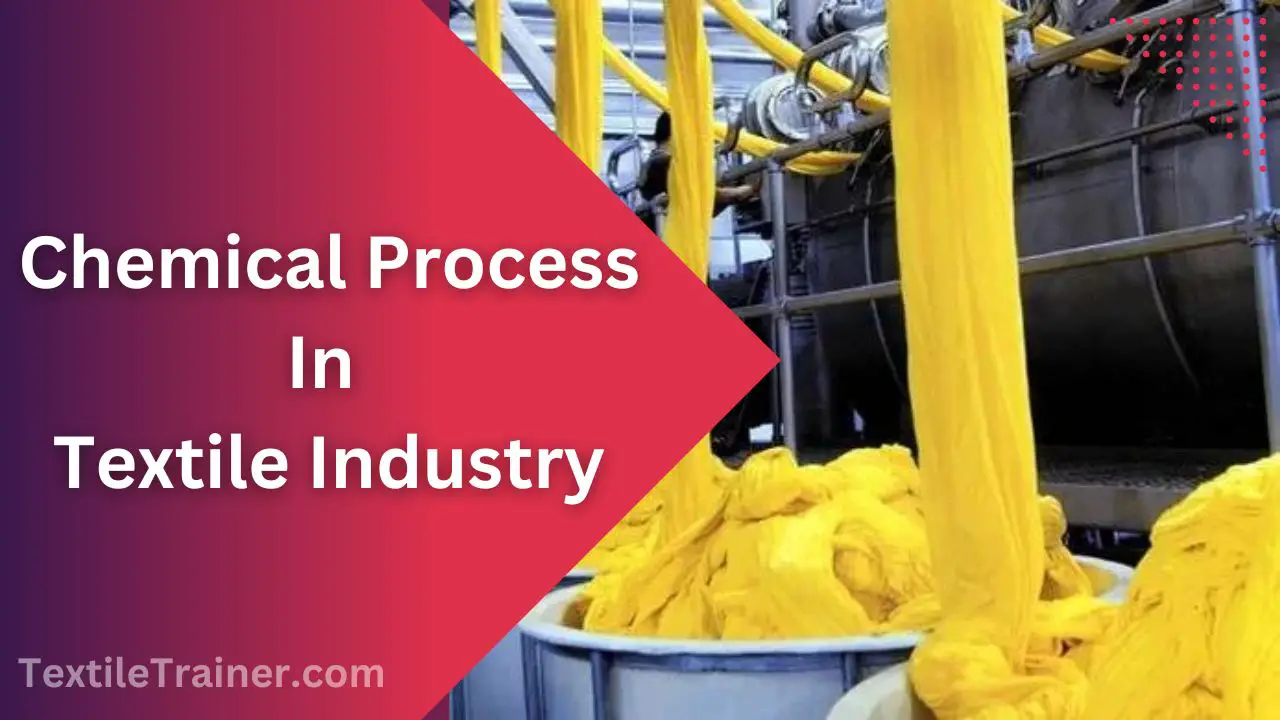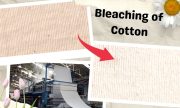Introduction:
Chemical processing of textile materials refers to the use of various chemical treatments and processes to modify the physical and chemical properties of fibers, yarns, and fabrics. These treatments can improve the aesthetics, durability, functionality, and performance of textile materials.
Chemical Processing:
Some of the common chemical processing techniques used in the textile industry are describe below.
Bleaching:
This process involves the use of chemicals to remove natural or artificial colorants from the fibers or fabrics. Bleaching agents such as hydrogen peroxide, sodium hypochlorite, and sodium chlorite are used to whiten fabrics.
Dyeing:
Dyeing involves the use of colored substances to impart new hues to textile materials. Dyes can be applied to fibers, yarns, or fabrics using various methods such as dip dyeing, direct dyeing, and vat dyeing.

Printing:
Printing is a process of applying a design or pattern to the surface of a fabric using dyes or pigments. Techniques such as screen printing, rotary printing, and digital printing are commonly used in textile processing.
Finishing:
Finishing refers to the application of chemicals to improve the properties of fabrics such as softness, water repellency, flame retardancy, or anti-microbial properties. Techniques such as resin finishing, water-repellent finishing, and anti-static finishing are commonly used in the textile industry.
Mercerization:
Mercerization is a process that involves treating cotton fibers with sodium hydroxide to increase their strength, luster, and absorbency. The process causes the fibers to swell, which results in a permanent change in their physical structure.
Enzyme Treatment:
Enzyme treatment is a natural and environmentally-friendly process used to soften and improve the hand feel of fabrics. It can also be used to remove impurities, such as pectin or natural dyes, from the fabric.
Overall, chemical processing plays a significant role in the textile industry, providing a range of benefits to both manufacturers and consumers alike.
Additionally, chemical processing techniques can also be used to enhance the functional properties of textile materials. For example, fabric can be treated to make it waterproof, flame-resistant, or antimicrobial. This makes the fabric suitable for use in various applications such as outdoor clothing, protective gear, and medical textiles.
Chemical processing can also be used to create new and innovative materials, such as smart textiles that can respond to changes in their environment. For instance, fabrics can be treated with materials that can sense temperature or moisture levels, allowing them to regulate their own properties.
While chemical processing has a range of benefits for the textile industry, it is important to consider the environmental impact of these processes. Many chemicals used in textile processing can be harmful to the environment and human health. To minimize the impact of chemical processing on the environment, many textile manufacturers have implemented sustainable and eco-friendly processes, such as using natural dyes or recycling wastewater.
In addition to the environmental impact, it is also important to consider the social impact of chemical processing in the textile industry. The use of certain chemicals, such as formaldehyde or azo dyes, can have negative health effects on workers in the textile industry. Workers who handle these chemicals on a regular basis may be exposed to harmful fumes or absorb chemicals through their skin. To address these concerns, many countries have established regulations to limit the use of harmful chemicals in textile processing and to protect the health and safety of workers.
In summary, chemical processing is an important part of the textile industry that provides a range of benefits to manufacturers and consumers. However, it is essential to consider the environmental and social impact of these processes and to take steps to minimize any negative effects. This includes implementing sustainable and eco-friendly practices, reducing the use of harmful chemicals, and ensuring the health and safety of workers in the textile industry.







2 thoughts on “Introduction to chemical processing of textile materials”